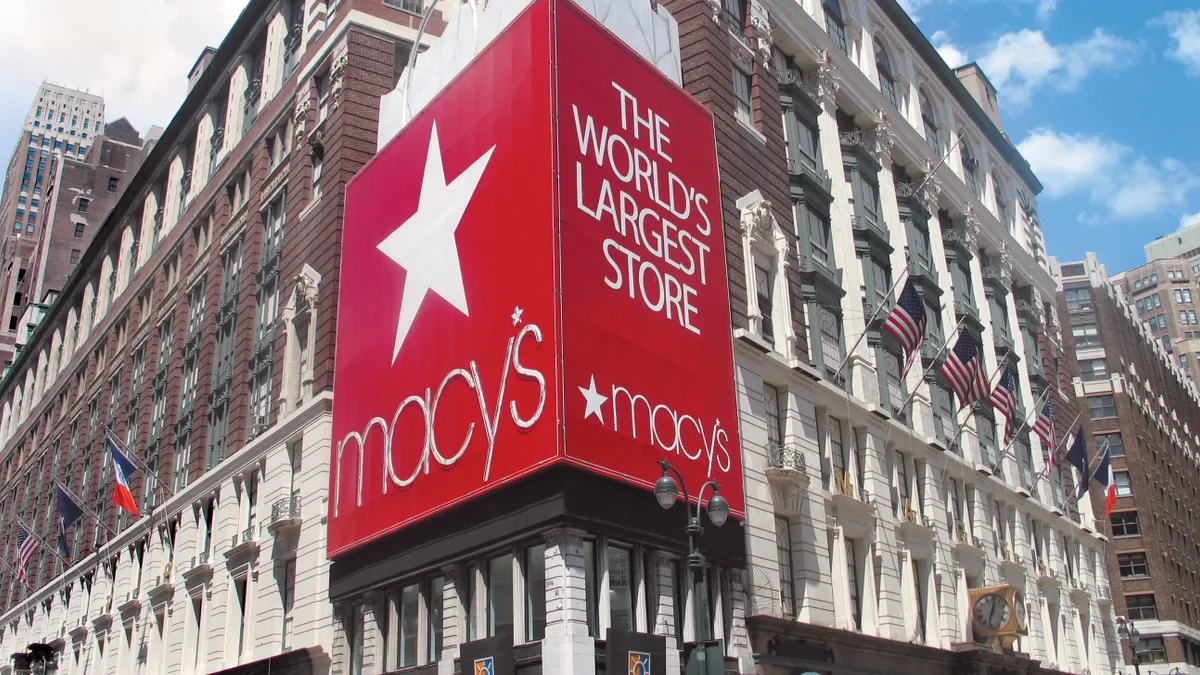Dive Brief:
-
At an investor conference in New York this week, Macy’s CEO Terry Lundgren told analysts that while Amazon poses a threat in its apparel sales effort, the e-retail giant may not be quite prepared for the logistics of apparel sales online.
-
Noting that shoppers tend to order the same item in multiple sizes, try them on and return all but the one that fits (if they like it), Lundgren told investors that Amazon is "going to have an interesting challenge when they start getting all those returns coming back online.”
-
Having 800 stores nationwide allows Macy’s to give shoppers an opportunity to shop for something else whenever they make returns in stores, Lundgren said. Nordstrom, in part for the same reason as well as to improve customer convenience, recently began allowing returns of purchases from its full-line stores to its off-price Rack stores.
Dive Insight:
A July report from Cowen & Co. found that Amazon’s apparel sales would hit $16.34 billion for the year, compared to $22.2 billion for Macy’s in 2015. In that note Cowen predicted that by 2017, Amazon would overtake Macy's as the top apparel retailer in the U.S.
But apparel has been something of a tough nut to crack for Amazon because many brands have been reluctant to cede marketing control and pricing to the e-commerce giant. Last month the e-retail giant announced a slew of new house apparel and accessories brands including Franklin & Freeman, Franklin Tailored, James & Erin, Lark & Ro, North Eleven, Scout + Ro, and Society New York.
While apparel sales remain a huge chunk of sales and even growth in retail, several brands have stumbled in their efforts to come up with merchandise that people want. Plus, there appears to be great truth to the idea that many consumers, including many younger ones, are opting to spend their money on experiences rather than stuff like clothes.
Perhaps Amazon’s rumored plans for more brick-and-mortar stores is part of this fashion effort, considering that apparel sales are especially tricky online. They are also expensive due to a high level of returns, as Lundgren says—the consequence of people not being able to try anything on until after they’ve paid for and received delivery of the items.
But retail futurist Doug Stephens says that Amazon likely knows what it’s up against, and that the move is probably more about attracting more Prime members, in addition to increasing its involvement in the massive apparel business.
“What Amazon recognizes is the apparel trade that is happening online is in the billions and billions,” Stephens told Retail Dive. “There an incredibly long tail in apparel, and I suspect that the apparel play is more aimed at that than it is becoming a competitor to Macy’s or Bloomingdales’s, where they get stuck with end of lines. [Like Amazon’s bookstore,] everything Amazon does is aimed at that—getting their consumer into their ecosystem. Apparel is another way to do this.”









